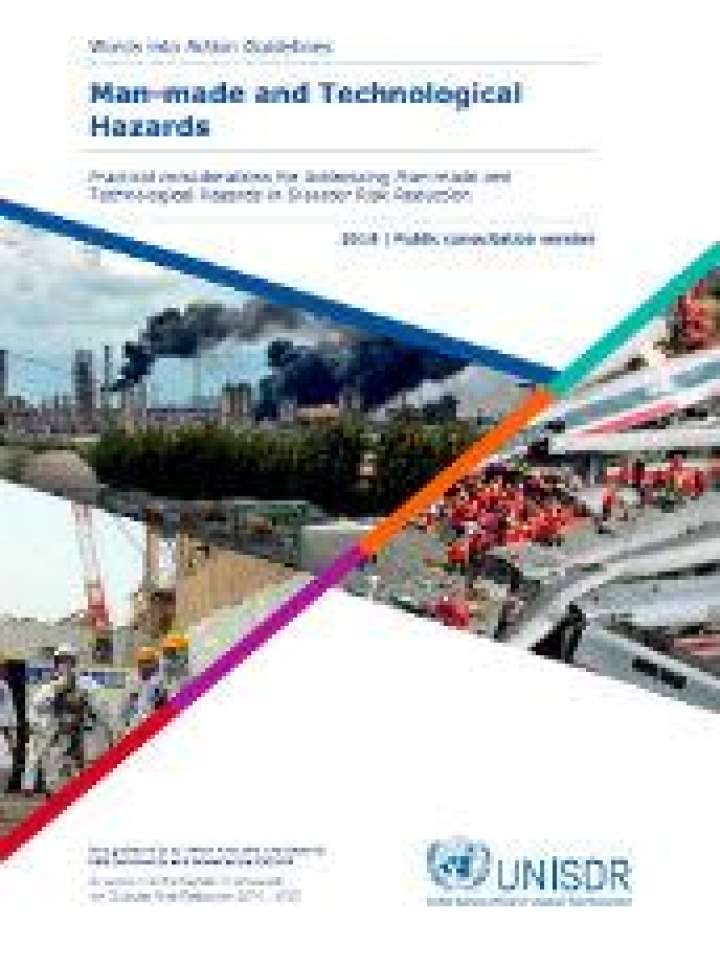Words into Action guideline: Man-made/technological hazards
The Guide takes a practical approach in addressing man-made and technological hazards, and builds upon previous analyses and recommendations relating to such hazards in the context of DRR.
The Guide builds on the outcomes of the Open-ended Intergovernmental Expert Working Group on Indicators and Terminology for the Sendai Framework, and the work on hazard classification and terminology related to man-made hazards. It covers the following classes of hazards:
- Man-made (i.e., anthropogenic, or human-induced) hazards are defined as those “induced entirely or predominantly by human activities and choices”. This term does not include the occurrence or risk of armed conflicts and other situations of social instability or tension which are subject to international humanitarian law and national legislation. Technological hazards are normally considered a subset of man-made hazards.
- Chemical, nuclear and radiological hazards, as well as transport hazards are defined as those "originate from technological or industrial conditions, dangerous procedures, infrastructure failures or specific human activities.
Examples include industrial pollution, ionizing radiation, toxic wastes, dam failures, transport accidents, factory explosions, fires and chemical spills. Technological hazards also may arise directly as a result of the impacts of a natural hazard event. A technological accident caused by a natural hazard is known as a Natech.
This guide does not cover structural collapses of buildings and infrastructures such as bridges, dams and factories as this is subject of another guide.
